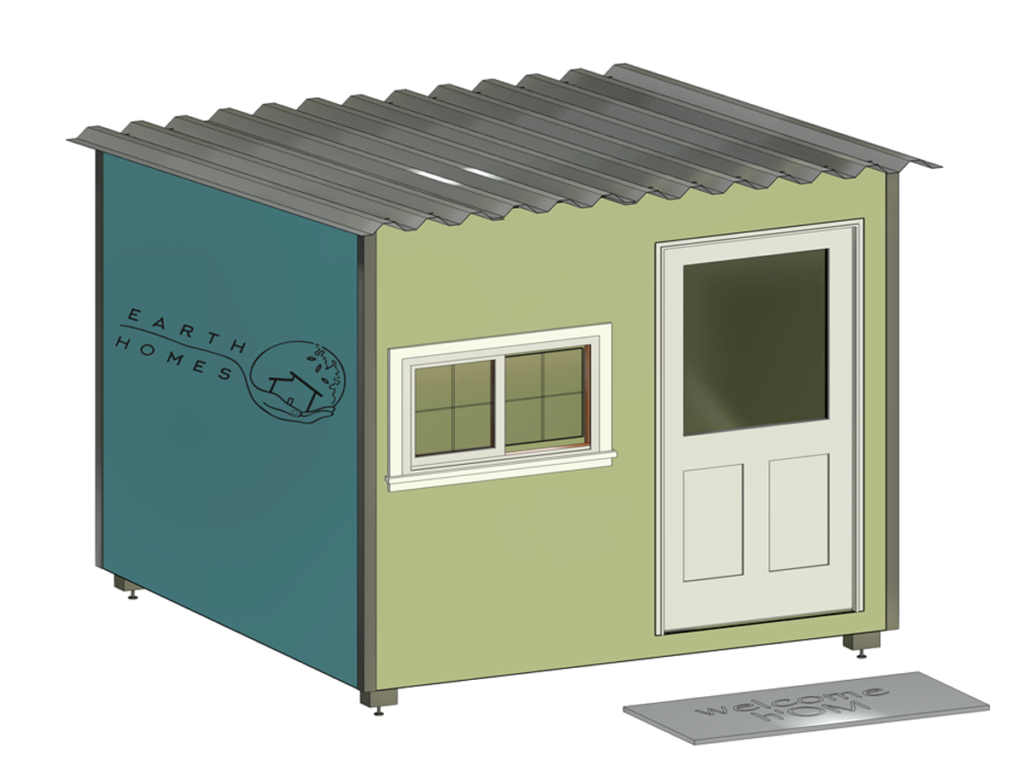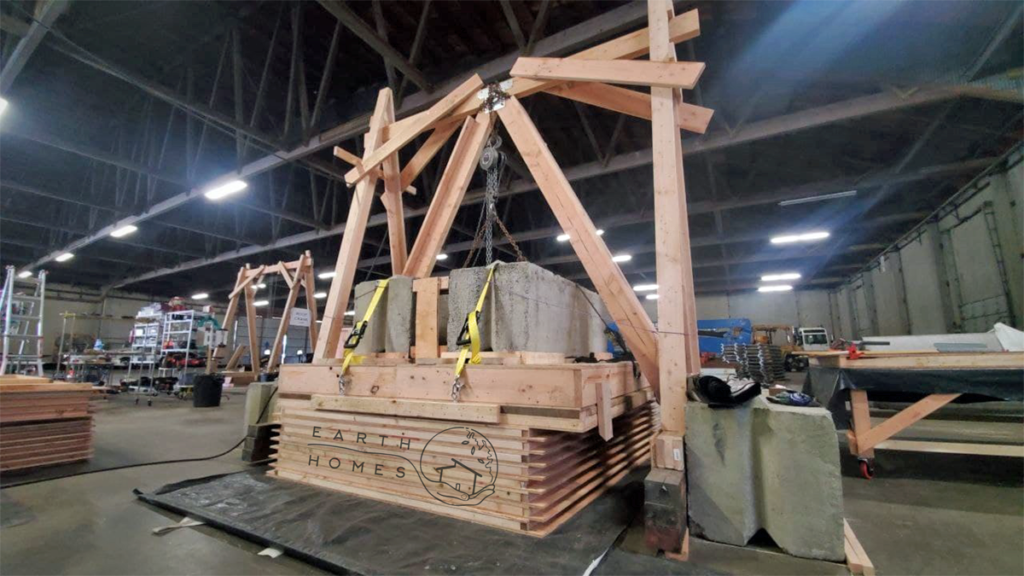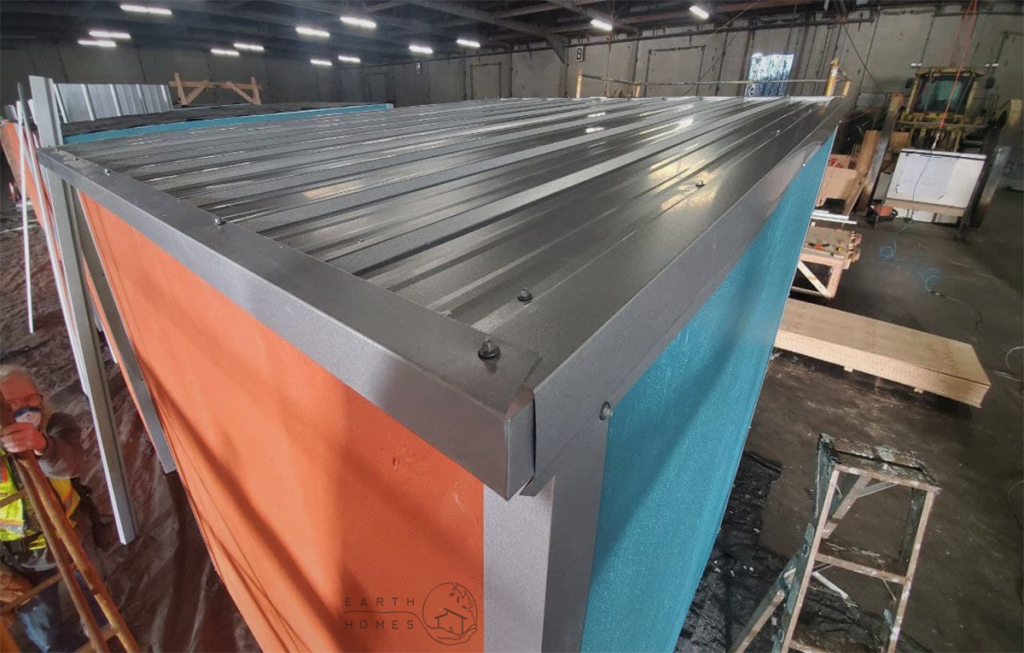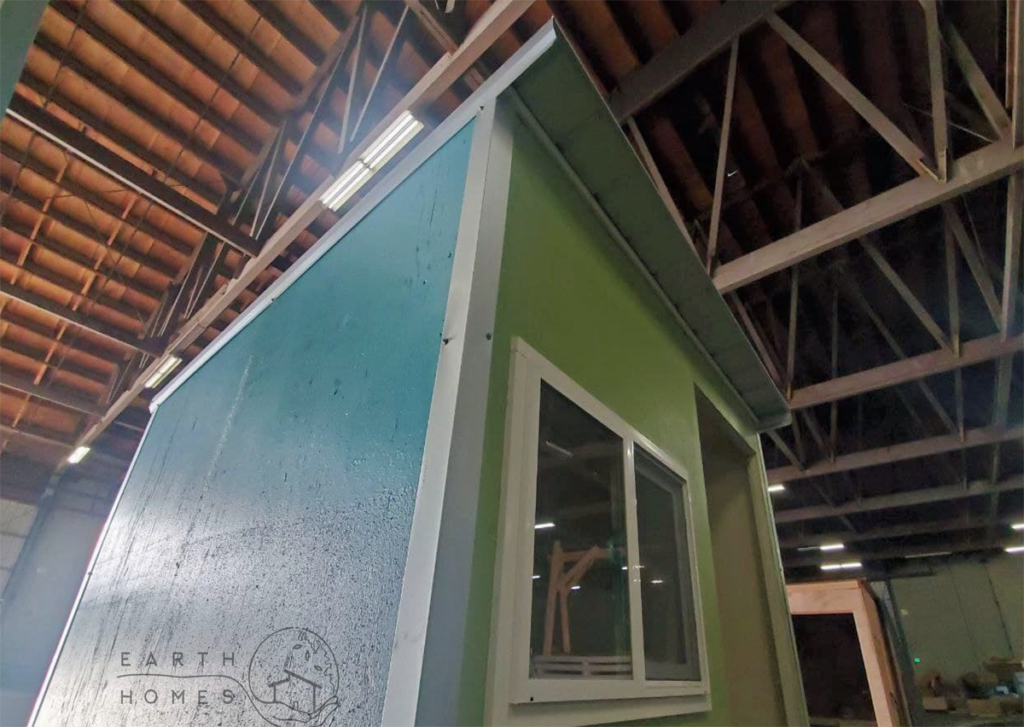Frame, glue, foam, staple, glue, frame, staple, squish, repeat.
Inside a 10,000-plus square foot Port of Olympia warehouse, that’s the rhythm of assembly line-style work on 60 8-by-8 foot homes whose final destination is the downtown Olympia tent city known as the “mitigation site”.
Sometime in mid-April, these new dwellings will begin to replace troublesome tents at the site, which the city of Olympia opened in December 2018 as a temporary space for more than 100 people who were visibly camping in various downtown locations, just a mile from and within view of the State Capitol building.
“I believe all people deserve to have the dignity of quality and durable housing,” says Aaron Sauerhoff, owner of Earth Homes, the local business under contract with the city of Olympia to build the homes. Unlike tents, he said, “these are suitable for human shelter”.

“Nobody wants to see the suffering and lack that we’re faced within the community and nobody wants to give to a fruitless relief effort either,” he said. “What we’re doing is engaging with and establishing relationships … to help integrate and inspire (those who will benefit from having the homes). It’s not about boxing people up, it’s about healing individually and collectively by providing a springboard for empowerment,” he said.
About 80 people live at the mitigation site, which is managed by Catholic Community Services under a contract with the city. CCS provides on-site case management and works with residents to get them into permanent housing.
In the meantime, they live in flimsy tents that fall apart and have to be replaced several times a year. These can’t be locked and are soaking wet and freezing in the winter, sometimes collapsing under the weight of snow, and extremely hot in the summer.
Sauerhoff and some of his crew consulted with site residents on the new homes’ design. Each has one window, a door that locks, and a slightly slanted metal roof. They will be protected from the difficulties snowstorms, rain, wind, heat, and rodents pose to residents.

“We are trying to get rid of the tents,” said Keith Stahley, an assistant city manager overseeing the home-building project. “This is a way better solution, it is way more humane,” he said.
Just like their design, the homes’ construction is simple, using a design known as structural insulated panels. The building crew – paid staff and mitigation site residents and volunteers – cuts all of the pieces to size and sandwiches glue-covered foam panels inside two sheets of plywood and staples them together. Panels then go into “The Squisher” where four tons of concrete blocks rest on the panels until the glue is firm. When all of the parts are ready, it takes two people about 20 minutes to assemble them into a house that is durable and, importantly, dry and insulated.
“This is a big undertaking and we are committed to a great outcome,” Stahley said as he thanked the partners in the project – the Port of Olympia, International Longshore Workers No. 47, businesses, and other donors and volunteers from the community.

“We were excited to be able to do this,” aid Jennie Foglia-Jones, a Port spokesperson.
Sauerhoff is committed to his company building safe and sustainable homes and this project comes straight from his heart.
Its $157,000 contract with the city began in December; the money came from the city, Thurston County contributed $60,000, the Providence Foundation contributed $50,000 and private citizens and businesses have chipped in about $10,000 in cash donations.
Construction kicked into high gear in mid-February after a month of planning, followed by frustrating delays.

“I hate to default to the ol’ Covid (sigh) conundrum, but there really has been a struggle to stay on the original timeline with a limited crew capacity and unpredictable supply chain fluctuations,” Sauerhoff said.
Due to pandemic-related restrictions, the Port initially limited workers to five at one time. The number increased to eight in Phase 2, and now stands at 10 to do the measuring, cutting, nailing, gluing, and assembly – and most recently, painting.
Construction was slowed by an issue far beyond their control: The cost of lumber and plywood has as much as tripled in the last year, Sauerhoff said, making it difficult to stay within budget (which they have done through negotiation on prices and generous donations of flooring and other materials). Many ports, mills, and distribution centers shut down in 2020 and are still scrambling to keep up with demand. He gives this example: A sheet of plywood that cost $14 this time last year now is as much as $50. He said their local plywood source was back-logged by thousands of sheets, which caused a slowdown in the production of the wall, floor, and roof panels.
Now that those circumstances are mostly resolved, the homes are coming together quickly. By late last week, four months into the project, 13 units were mostly assembled and ready for their windows, doors, metal roofs, and exterior painting.
He also cites the support from various businesses: Milgard (windows), Frontier (doors), TinMen Roofing in Rochester, Insulfoam in Puyallup, Hardel’s, local Home Depot branches, Murphy Plywood, Washington State Employees Credit Union and many more.
“We’ve been able to share a unique project and the response has been unanimously approving and excited,” he said.
“The bringing together of community volunteers, Mitigation Site dwellers, companies across the region, legislators, crews and executives at the Port, to gather and work (play) for a common purpose really drives the nail home – pun intended. When you come into the warehouse, all pretense falls away and we’re just people working with our hands together. That’s the real magic,” Sauerhoff said.
Says Stahley: I’m not aware of any other community approaching emergency shelter in this manner. No one other community has engaged with the homeless community in this way in the construction process. This feels like a warm hug that will allow people at the mitigation site a greater sense of dignity and security and hopefully provides a launching platform for moving forward with their lives,” Stahley said.
For more information, email Earth Homes at hello@earthhomes.design. If you are interested in volunteering, contact the crew at volunteer@earthhomes.design.



